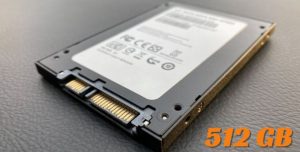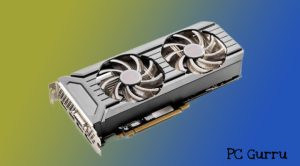How to turn on a laptop without a power button? If you’re trying to turn on your laptop, but the power button doesn’t work, you may be wondering what to do next. Fortunately, it’s possible to turn on your laptop without using the power button. Instead, you can use the built-in trackpad or hotkeys available on most laptops to start up your computer without having to press anything else at all! Here’s how to turn on your laptop without a power button.
Googling for Answers
If you still have access to a desktop or tablet, you can always Google how to turn on your laptop without a power button. You should find instructions on how to boot your machine remotely if it won’t turn on when you press its power button. You may also be able to reset it by holding down a specific key combination like Fn + F1 or Ctrl + Shift + Power. And if all else fails, there are usually ways of fixing broken hardware issues by hooking your computer up to another laptop and using that device as an intermediary for booting up yours.
Consult Google if you’re not sure how—there are countless forums and Reddit threads dedicated to helping people out of similar jams. There are also third-party apps that can help—just search how to turn on your laptop without a power button in Google Play or Apple’s App Store.
Installing New Power Buttons
Before you try any of the solutions to turning on your laptop without using the power button, first install a new power button. It is faster and easier than any of these methods to turn on a laptop without the power button. These instructions apply to most laptops.
- First, locate and order a power button compatible with your laptop.
- Next, remove the laptop’s bottom cover with a screwdriver or other prying tools.
- Once inside, take out the motherboard and keyboard to access your power button’s backside.
- Finally, take out the power button and replace it with a new one. Before closing your laptop, make sure you connect the power button to the motherboard.
- The power button can be used to turn your laptop on with ease.
Trying Safe Mode First
We don’t recommend trying anything too technical until you get in front of a computer. But if you’re determined to do it yourself, try using your laptop in safe mode. This way, Windows will load without running startup items or any third-party apps (which can also cause problems). You should see an option on your screen that says safe mode. Click it, and Windows will boot up with minimal features. If your laptop turns on, you may want to consider bringing it into a shop for repairs.
Note that most Windows 8 laptops come with external power buttons—which makes turning them on more convenient than ever before! So if you have one of these laptops, we suggest trying to turn it on by pressing its button first. And remember, if nothing happens when you press your laptop’s power button, then unplugging and plugging back in again can often fix minor glitches like a nonresponsive display. But only try that last step as a last resort; doing so without checking out safe mode first could result in further damage to your system!
Read also: Best WIFI Card For PC
Pressing F8 During Bootup
If your laptop’s power button is broken, you can still turn it on by pressing F8 during bootup. You might have to press it a few times for a few seconds—the exact timing will depend on your PC and its BIOS version. Don’t use a screwdriver or other tool; just press repeatedly with your finger.
Alternatively, you could get someone else to press F8 while your laptop boots up. (This won’t work if your laptop doesn’t start up from an external drive.)
Disabling Automatic Startup Repair
Sometimes, you may have a hardware issue that causes a blue screen or locks up your system. It’s possible that your power button could be disabled, preventing you from turning on your laptop. If you can’t turn on your laptop because of a faulty power button and don’t want to pay for an expensive repair service, try starting it in Safe Mode with Networking.
This will let you access the Internet so you can disable Automatic Startup Repair (should it be enabled) and run diagnostics from outside Windows. Restart your laptop in Safe Mode and use F8 when prompted to enter Advanced Boot Options. Then select Disable Automatic Startup Repair. With Automatic Startup Repair disabled, run msconfig and check if Windows boots into Normal Mode without issues.
If not, there might be another issue at play here. Try running System Restore to restore your laptop to a previous point where it was working fine. After restoring your computer, go back into msconfig and see if you can boot normally without any errors now. You should also consider running some hardware diagnostics using tools like Memtest86+ and CPU-Z since they can help pinpoint what might be causing these issues.
Changing BIOS Settings
Another solution for turning on a laptop without a power button is to change the settings in your computer’s BIOS. The BIOS, or basic input/output system, works like an operating system for your hardware when you turn on your computer. By default, most laptops enter sleep mode after about 20 minutes of idle time, and some machines can be put into hibernation mode instead—but only if they have their power button attached.
If your machine has no power button but does have a reset button, it should be located near where the power button would normally be (i.e., towards one side of the keyboard). To turn off sleep mode and disable hibernation (if possible), change settings in your BIOS using either of these steps. This process may differ depending on your laptop model, so make sure to check your manual before attempting any changes. Otherwise, see if any third-party apps can help you shut down your laptop without pressing a button.
Power Off allows users to perform multiple functions through various key combinations and works with Windows 7, 8, and 10; while Easy Shut Down offers a similar service for Windows XP users only. Both are free downloads. If neither option seems ideal for you, don’t worry—there’s always just shutting down by holding down power for 30 seconds (and then holding it again) or waiting until your battery dies (or gets too low) before restarting it again!
Using an External Hard Drive
If your laptop’s power button is broken and you’re having trouble turning it on, there are a few things you can try. One solution is to buy an external hard drive (HDD) or portable HDD, which you can use as an alternative boot device for your laptop. To do so, first plug your external HDD into one of your computer’s USB ports and wait until Windows boots up (and eventually asks you if you want to open My Computer).
Next, click Continue on Windows’ popup window and locate your external HDD; then double-click it and proceed with using it as a primary boot device by clicking Use This Device. Now whenever you reboot or turn on your laptop, it will automatically load up from the external HDD. Note that depending on how much data you have stored in your laptop, it may take longer than usual to start up. Also, keep in mind that not all laptops support booting from an external HDD—you’ll need to check your laptop’s manual before trying out any of these steps.
Holding Down The Power Button For 10 Seconds
If your laptop’s power button is broken and you can’t access it, don’t worry. There are still a few steps you can take to start up your computer without it: First, close all of your open programs by clicking X in each window’s top-right corner. Then hold down Ctrl + Alt + Delete for 10 seconds. This should bring up a box asking if you want to shut down or restart your computer (the box will say Start Windows Normally and have an option that says Restart. Choose Restart from that list). After that, follow any on-screen prompts to get through the startup process.
It may take a little longer than usual, but eventually, you’ll be able to log into your account without needing to use the power button. The first time you do so, we recommend creating a backup disc using these instructions. That way, if anything goes wrong with your laptop after using these steps, you can always restore everything to normal using Recovery Mode. Once everything has been restored to normal and works as expected again, consider replacing your laptop’s power—they’re much easier to press!
Using Keyboard
Using the laptop keyboard you can turn on the laptop without using a power button easily. This setting can be enabled from the BIOS on your laptop, as shown below:
To enter the BIOS, instead of Windows, hold the F2, F10, or the DEL key while turning on your laptop. You will find the Power on by Keyboard or similar function in the Power Management Settings. This option can be enabled by pressing F10. You can now turn on your laptop even if it is off by pressing F10.
Using Motherboard
This hardware-based method is for those who are unable to turn on their laptop to access the BIOS to change keyboard settings or to access other settings. Although it’s not practical for daily use, you can turn on your laptop by using its motherboard. Open the laptop’s bottom cover and remove the motherboard with the appropriate tools. After removing the motherboard from its chassis, ensure that all connections remain intact. The power button connections can be removed from the motherboard. Next, you will need to shorten the pins 1 and 3 with a screwdriver or wire. This will immediately turn on your laptop. You can then access the BIOS to modify any settings you have after installing the motherboard.
With clock battery
The clock battery method is another hardware option that can be used to turn on your laptop without using the main power button. It can reset your BIOS settings, but it is much quicker than the motherboard method. To do this, you will need to open your laptop using a screwdriver or other prying tools. Next, remove the battery cable that is attached to your motherboard. Connect the battery with your laptop. After that, your laptop will turn on automatically.
With Wall Socket
Some laptops allow you to force-start a laptop with the wall socket charger, just like the clock battery method. You will need to open your laptop with the proper tools. Next, remove the bottom cover of your laptop and access the motherboard. Now, take out the battery cable and connect the laptop charger. Your laptop will automatically turn on when it receives power from the wall. This will allow you to access it quickly.
Using Laptop Lid
Although you may be using the lid of your laptop for sleeping it can also be used to turn on your laptop, even if it’s completely off. To do this procedure, you must change the BIOS settings. When you turn on your laptop with the power button, or using the hardware methods mentioned above, press F2 either F10, F2 as well as the DEL key to access the BIOS. Once you’ve access to the BIOS, go to the Power Management and Power Settings tab. There, locate and turn on the Power by opening the Lid option. You can save the settings using F10. The next time you lift the lid of your laptop, it will shut off power.
Using Wake on LAN
You can use the LAN connection of your laptop to turn it on, just like the keyboard and lid. This feature, like other similar features, must be enabled from BIOS. To do this you will need to access the BIOS first using any of these settings. Go to Power Management and enable Wake on LAN. You can save this setting by pressing F10 on the keyboard. Next, press Windows Key + X to open Device Manager in Windows. Open the Properties tab to locate your network adapter. Here you will need to choose the Allow this device to wake the computer option under the Power Management tab. Under the Advanced tab, you will need to enable Wake on Magic Packet. You can also use any supported router app or network app on any device connected to your network to turn your laptop on using your LAN connection.
Conclusion
You should be able to quickly turn on your computer using the above steps and methods, even if you have a broken power button. There are many ways to access your laptop. You can use one of these methods instead of pressing the power button.
If you’ve tried all the steps and still can’t turn on your computer, it could be that your problem is not with the power button. Your computer may be having problems with other components or it might just not turn on.








